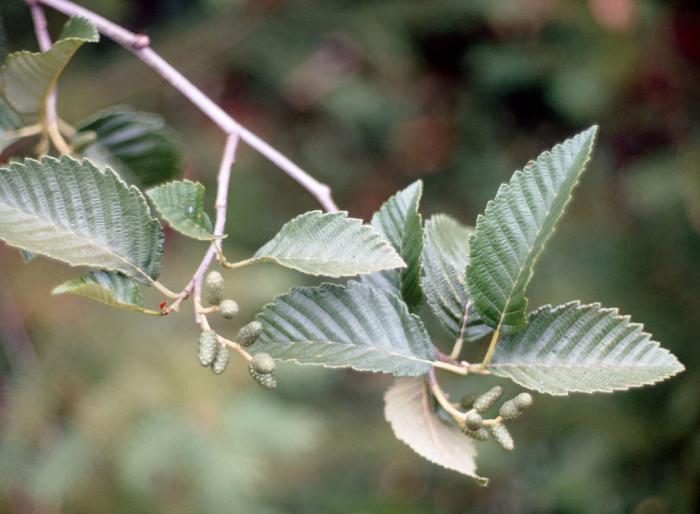| Botanical Name: Alnus tenuifolia | |
| Common Name: Mountain Alder, Thinleaf Alder |

-
Anatomy
-
Culture
-
Design
Plant Type
Tree, Shrub
Height Range
12-25'
Flower Color
n/a
Flower Season
n/a
Leaf Color
Green, Yellow
Bark Color
Brown, Grey
Fruit Color
Brown
Fruit Season
Persistent
Sun
Full, Half, Shade
Water
High
Growth Rate
Fast
Soil Type
Unparticular
Soil Condition
Rich, Well-drained, Moist
Soil pH
Acid, Neutral
Adverse Factors
Invasive
Design Styles
Meadow, Water Garden, Wetlands, Woodland
Accenting Features
Fall Color, Multi-trunk Tree
Seasonal Interest
Winter, Fall
Location Uses
Background, Shrub Border, Park
Special Uses
Erosion Control, Screen, Mass Planting, Naturalizing
Attracts Wildlife
Birds, Butterflies
Information by: Stephanie Duer
Photographer:
Photographer:
-
Description
-
Notes
The Mountain Alder is a multistemmed large shrub or small tree, growing 15 to 20 feet tall and wide. The dull dark green leaves are thin and oval with serrated margins. Bark is grayish-brown, thin, and smooth, becoming reddish-gray and scaly with age. Catkins are produced during the growing season prior to blooming, and expand before the leaves emerge in the spring. Cone-like fruits enclose a very small winged seed that matures in late summer and persist through winter.
Grows best in course to medium, nutrient rich, moist soils and sunny to lightly shaded areas. Mountain alder can tolerate floods but not drought. It is able to survive extremely cold winters. The seeds, buds, and catkins are important winter food for various birds, including chickadees and goldfinches.